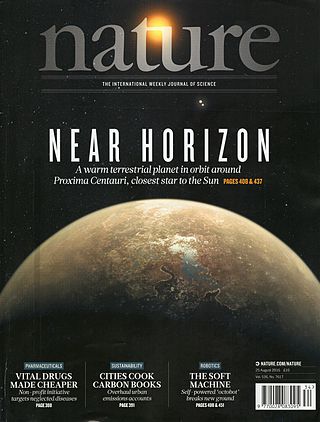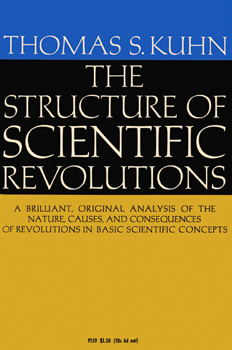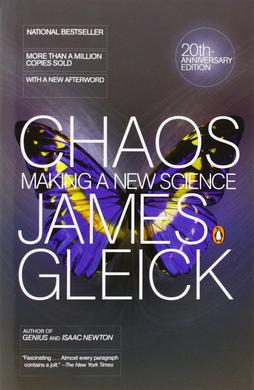Science is a rigorous, systematic endeavor that builds and organizes knowledge in the form of testable explanations and predictions about the world. Modern science is typically divided into three major branches: the natural sciences, which study the physical world; the social sciences, which study individuals and societies; and the formal sciences, which study formal systems, governed by axioms and rules. There is disagreement whether the formal sciences are science disciplines, as they do not rely on empirical evidence. Applied sciences are disciplines that use scientific knowledge for practical purposes, such as in engineering and medicine.
The scientific method is an empirical method for acquiring knowledge that has characterized the development of science since at least the 17th century. The scientific method involves careful observation coupled with rigorous scepticism, because cognitive assumptions can distort the interpretation of the observation. Scientific inquiry includes creating a hypothesis through inductive reasoning, testing it through experiments and statistical analysis, and adjusting or discarding the hypothesis based on the results.

Scientific American, informally abbreviated SciAm or sometimes SA, is an American popular science magazine. Many scientists, including Albert Einstein and Nikola Tesla, have contributed articles to it, with more than 150 Nobel Prize-winners being featured since its inception.

In academic publishing, scientific journal is a periodical publication designed to further the progress of science by disseminating new research findings to the scientific community. These journals serve as a platform for researchers, scholars, and scientists to share their latest discoveries, insights, and methodologies across a multitude of scientific disciplines. Unlike professional or trade magazines, scientific journals are characterized by their rigorous peer-review process, which aims to ensure the validity, reliability, and quality of the published content. With origins dating back to the 17th century, the publication of scientific journals has evolved significantly, playing a pivotal role in the advancement of scientific knowledge, fostering academic discourse, and facilitating collaboration within the scientific community.

Nature is a British weekly scientific journal founded and based in London, England. As a multidisciplinary publication, Nature features peer-reviewed research from a variety of academic disciplines, mainly in science and technology. It has core editorial offices across the United States, continental Europe, and Asia under the international scientific publishing company Springer Nature. Nature was one of the world's most cited scientific journals by the Science Edition of the 2022 Journal Citation Reports, making it one of the world's most-read and most prestigious academic journals. As of 2012, it claimed an online readership of about three million unique readers per month.

The Structure of Scientific Revolutions is a book about the history of science by philosopher Thomas S. Kuhn. Its publication was a landmark event in the history, philosophy, and sociology of science. Kuhn challenged the then prevailing view of progress in science in which scientific progress was viewed as "development-by-accumulation" of accepted facts and theories. Kuhn argued for an episodic model in which periods of conceptual continuity where there is cumulative progress, which Kuhn referred to as periods of "normal science", were interrupted by periods of revolutionary science. The discovery of "anomalies" during revolutions in science leads to new paradigms. New paradigms then ask new questions of old data, move beyond the mere "puzzle-solving" of the previous paradigm, change the rules of the game and the "map" directing new research.

The common raven is a large all-black passerine bird. It is the most widely distributed of all corvids, found across the Northern Hemisphere. It is a raven known by many names at the subspecies level; there are at least eight subspecies with little variation in appearance, although recent research has demonstrated significant genetic differences among populations from various regions. It is one of the two largest corvids, alongside the thick-billed raven, and is possibly the heaviest passerine bird; at maturity, the common raven averages 63 centimetres in length and 1.47 kilograms in mass. Although their typical lifespan is considerably shorter, common ravens can live more than 23 years in the wild. Young birds may travel in flocks but later mate for life, with each mated pair defending a territory.
Bernd Heinrich, is a professor emeritus in the biology department at the University of Vermont and is the author of a number of books about nature writing and biology. Heinrich has made major contributions to the study of insect physiology and behavior, as well as bird behavior. In addition to many scientific publications, Heinrich has written over a dozen highly praised books, mostly related to his research examining the physiological, ecological and behavioral adaptations of animals and plants to their physical environments. He has also written books that include more of his personal reflections on nature. He is the son of Ichneumon expert Gerd Heinrich.
Objectivity in science is an attempt to uncover truths about the natural world by eliminating personal biases, emotions, and false beliefs. It is often linked to observation as part of the scientific method. It is thus intimately related to the aim of testability and reproducibility. To be considered objective, the results of measurement must be communicated from person to person, and then demonstrated for third parties, as an advance in a collective understanding of the world. Such demonstrable knowledge has ordinarily conferred demonstrable powers of prediction or technology.

Joseph Grinnell was an American field biologist and zoologist. He made extensive studies of the fauna of California, and is credited with introducing a method of recording precise field observations known as the Grinnell System. He served as the first director of the Museum of Vertebrate Zoology at the University of California, Berkeley from the museum's inception in 1908 until his death.

Chaos: Making a New Science is a debut non-fiction book by James Gleick that initially introduced the principles and early development of the chaos theory to the public. It was a finalist for the National Book Award and the Pulitzer Prize in 1987, and was shortlisted for the Science Book Prize in 1989. The book was published on October 29, 1987 by Viking Books.

Parasite Rex: Inside the Bizarre World of Nature's Most Dangerous Creatures is a nonfiction book by Carl Zimmer that was published by Free Press in 2000. The book discusses the history of parasites on Earth and how the field and study of parasitology formed, along with a look at the most dangerous parasites ever found in nature. A special paperback edition was released in March 2011 for the tenth anniversary of the book's publishing, including a new epilogue written by Zimmer. Signed bookplates were also given to fans that sent in a photo of themselves with a copy of the special edition.

In scholarship, a secondary source is a document or recording that relates or discusses information originally presented elsewhere. A secondary source contrasts with a primary, or original, source of the information being discussed. A primary source can be a person with direct knowledge of a situation or it may be a document created by such a person.
Scientocracy is the practice of basing public policies on science.

Mission: Earth, Voyage to the Home Planet is a children's literature book by science writer June A. English and astronaut Thomas David Jones that was published in 1996 by Scholastic. Jones was among the crew members of the Space Shuttle Endeavour during an eleven-day mission in space, which was launched in April 1994 to study the ecological well-being of Earth using specialized radar technology. The book, which is illustrated with radar images and picturesque photographs, chronicles the mission and Jones' experiences of it.

T. rex and the Crater of Doom is a nonfiction book by UC Berkeley professor Walter Alvarez that was published by Princeton University Press in 1997. The book discusses the research and evidence that led to the creation of the Alvarez hypothesis, which explains how an impact event was the main cause that resulted in the Cretaceous–Paleogene extinction event.

Feathers: The Evolution of a Natural Miracle is a natural history book by American conservation biologist Thor Hanson. Published by Basic Books in 2011 and written for general audiences, the book discusses the significance of feathers, their evolution, and their history both in nature and in use by humans.

Braiding Sweetgrass: Indigenous Wisdom, Scientific Knowledge, and the Teachings of Plants is a 2013 nonfiction book by Potawatomi professor Robin Wall Kimmerer, about the role of Indigenous knowledge as an alternative or complementary approach to Western mainstream scientific methodologies.

Subtle is the Lord: The Science and the Life of Albert Einstein is a biography of Albert Einstein written by Abraham Pais. First published in 1982 by Oxford University Press, the book is one of the most acclaimed biographies of the scientist. This was not the first popular biography of Einstein, but it was the first to focus on his scientific research as opposed to his life as a popular figure. Pais, renowned for his work in theoretical particle physics, was a friend of Einstein's at the Institute for Advanced Study in his early career. Originally published in English in the United States and the United Kingdom, the book has translations in over a dozen languages. Pais later released a sequel to the book in 1994 titled Einstein Lived Here and, after his death in 2000, the University Press released a posthumous reprint of the biography in 2005, with a new foreword by Roger Penrose. Considered very popular for a science book, the biography sold tens of thousands of copies of both paperback and hardcover versions in its first year. The book has received many reviews and, the year after its initial publication, it won both the 1983 National Book Award for Nonfiction, in Science (Hardcover), and the 1983 Science Writing Award.

Uncertainty: the Life and Science of Werner Heisenberg is a biography by David C. Cassidy documenting the life and science of Werner Heisenberg, one of the founders of quantum mechanics. The book was published in 1992 by W. H. Freeman and Company while an updated and popularized version was published in 2009 under the title Beyond Uncertainty: Heisenberg, Quantum Physics, and The Bomb. The book is named after the quantum mechanics concept known as Heisenberg's uncertainty principle. It has been reviewed many times and was generally well received.















